Dynasty Analysis
No comment
Draft Sharks Model
7.00
77th percentile
0.58
68th percentile
0.34
43rd percentile
0.54
81st percentile
Trey Sermon Combine Results
Trey Sermon Future Projections
| Scoring | 1 Yr Proj | 3 Yr Proj | 5 Yr Proj | 10 Yr Proj |
|---|---|---|---|---|
| 0.0 PPR | - | |||
| 0.5 PPR | - | |||
| 1.0 PPR | - | |||
| TE Premium | - |
Trey Sermon Scouting Report
Trey Sermon Scouting Report
- Height: 6’0
- Weight: 215
- Age: 22.3
Pro Day Results
- 40-yard dash: 4.57 seconds
- Vertical: 37 inches
- Broad: 10’5
- 3-cone: 6.83 seconds
- Short Shuttle: 4.28 seconds
Trey Sermon College Stats
| Car | Yds | YPC | TDs | Rec | Yds | YPR | TDs | |
| 2017 | 121 | 744 | 6.1 | 5 | 16 | 139 | 8.7 | 2 |
| 2018 | 164 | 947 | 5.8 | 13 | 12 | 181 | 15.1 | 0 |
| 2019 | 54 | 385 | 7.1 | 4 | 8 | 71 | 8.9 | 1 |
| 2020 | 116 | 870 | 7.5 | 4 | 12 | 95 | 7.9 | 0 |
A 4-star recruit out of Georgia, Sermon chose Oklahoma over a slew of offers from schools including Alabama, Auburn, Florida and Georgia.
He contributed right away for the Sooners, ranking 2nd behind Rodney Anderson in carries as a true freshman and trailing the incumbent by just a single reception. Sermon’s 6.1 yards per rush also nearly matched Anderson’s 6.2.
The following season found injury limiting Anderson to just 11 rushing attempts. So Sermon took advantage, leading OU in carries and rushing TDs. He delivered 4 games of 100+ yards, but he also had to share the backfield. Sermon found just 2 occasions where he reached double-digit carries in consecutive games.
The high point came when Sermon racked up a monster 26-206-3 rushing line at Texas Tech, and then followed with 124 yards and 2 more scores on 16 carries against Oklahoma State. His 12 receptions and 181 receiving yards each led the backfield as well. But Kennedy Brooks averaged a whopping 8.9 yards per rush to stomp Sermon in that category and beat him in total rushing yards on 45 fewer attempts.
Sermon’s junior season on the field found his Sooners run come to an end. He would lead the 2019 team in carries just 3 times, reaching 11 attempts only twice and never exceeding that total. Sermon dealt with a knee injury that cost him games, but his playing time suffered even outside of that. He wound up 4th on the team in rushes, behind Brooks, QB Jalen Hurts and transfer Rhamondre Stevenson. Sermon also finished 3rd among RBs in receptions. His strong 7.1 yards per carry beat Brooks, but trailed Stevenson’s 8.0.
In search of more playing time -- which wasn’t coming at Oklahoma -- Sermon transferred to Ohio State. As a graduate transfer, he was able to avoid sitting out a year.
Sermon endured an early rocky patch with OSU’s RBs coach before mending. That might be a meaningless blip, or it could be worth watching given that he left Oklahoma after disagreeing with HC Lincoln Riley on playing time.
Sermon wound up leading the Ohio State backfield in carries, rushing yards, yards per carry, receptions and receiving yards. He started somewhat slowly, however, splitting work with Master Teague despite outperforming the incumbent. Sermon averaged just 11 carries over the first 5 games of the COVID-abbreviated season, never exceeding 13 in that span. Teague led him 87-55 in rushing attempts over those 5 games, while Sermon averaged 6.3 yards per rush vs. Teague’s 4.9.
Sermon took control of the Big Ten title game, however, racking up a school-record 331 yards and 2 TDs on 29 rushes vs. Northwestern -- a tough D that stifled star QB Justin Fields. Sermon followed that with a 31-193-1 rushing line in the national semifinal win over Clemson. That game also included 4 receptions for 61 yards, accounting for 33% of Sermon’s season catches and 64.2% of his receiving yards. Those 2 games also accounted for 51.7% of Sermon’s carries and 60.2% of his rushing yardage for the year.
A week later, Sermon left the national-title game after his 1st carry with an apparent upper-body injury. Nothing serious came of it, but that marked the end of his college career.
Trey Sermon Highlights
Games watched: Clemson, Northwestern, Nebraska, Penn State
Sermon runs with an intriguing mix of power and athleticism. At 215 pounds, he’s only slightly above average vs. historical NFL Combine HBs. But he’s punishing at the 2nd and 3rd levels of a defense.

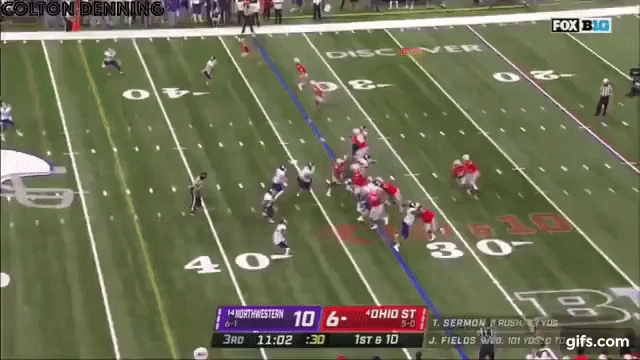
Sermon certainly benefited last season from some good run-blocking in a high-level Ohio State offense. But he also displayed vision and creativity to find rushing lanes even when they don’t immediately present themselves …

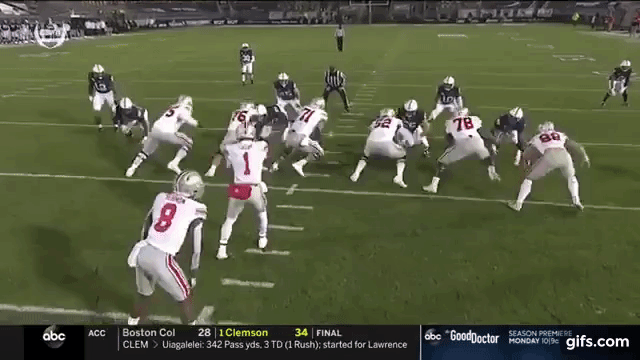
Here’s a sample from his Oklahoma days …
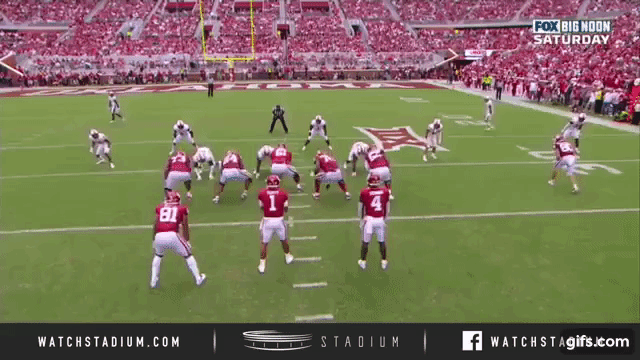
And here’s some agility to elude a defender in the backfield, followed by the strength to drag tacklers …

Sermon’s 6.83-second 3-cone drill at Ohio State’s pro day backs up this displayed agility, rating 87th percentile for the position, according to Pro Football Focus.
That said, there are limitations to the movement skills.

There are other runners who could have gotten outside the edge defender on that play and created something.
Sermon also checks in a little tall for a RB. At 6’0, he’s nearly an inch-and-a-half taller than the historical Combine average for his position. That would matter less if Sermon had less of an upright running style.
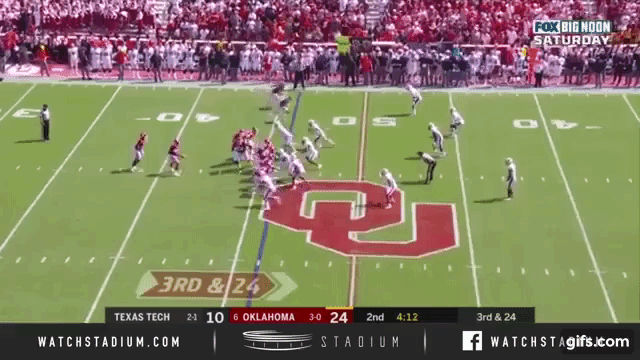
Although he finds running room and ultimately produces a nice gain on that play, look at how tall Sermon remains as he navigates traffic near the line of scrimmage. That might not play as well vs. stronger, faster and smarter defenders in the pros.
Here’s another clip …
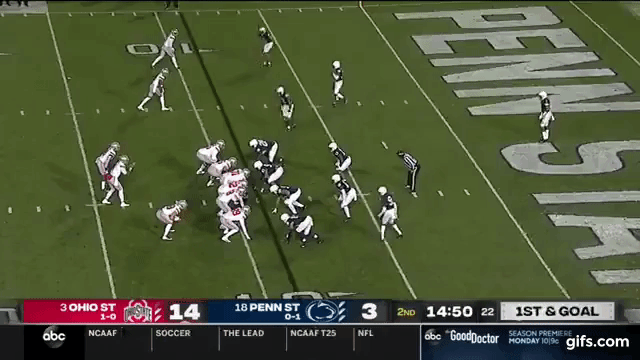
In this respect, Sermon reminds me of Chris Brown, a 3rd-round pick out of Colorado in 2003 who had a decent but brief run with the Titans and Texans.
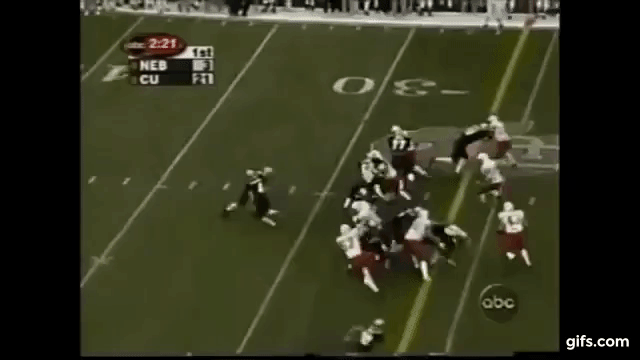
Brown stood 6’3, three inches taller than Sermon.
Sermon will probably need to prove himself in the passing game with his NFL team after catching just 48 passses across 4 college seasons. He did catch the ball cleanly and display smooth transitions into his run after the catch in limited examples I saw, though.
Here are a couple of beyond-the-line examples from his Sooner days …
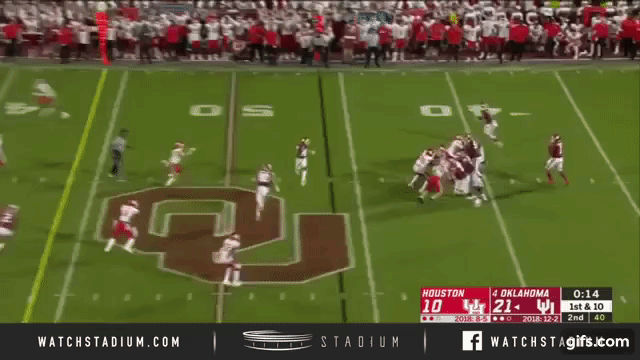
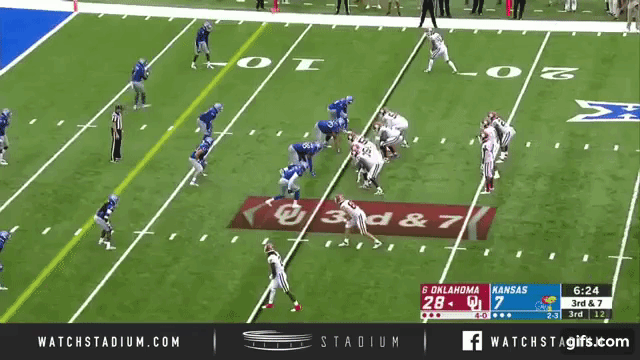
Sermon also showed aggressiveness in pass protection but will surely need to be coached up in this area. His hand placement looked a little inconsistent in the samples I saw, and he comes at the blitzer pretty high in this clip …
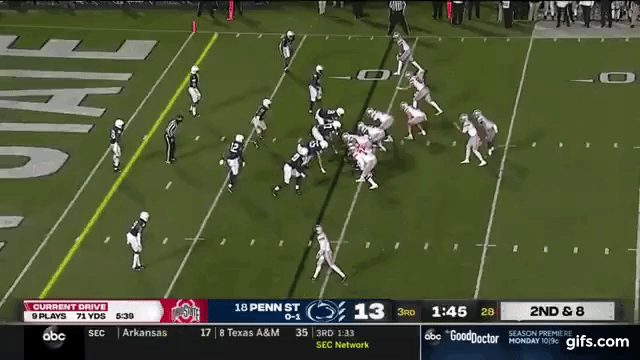
Fantasy Outlook
Sermon fits into a sizable group of RBs who are waiting on their NFL landing spots. Well, more like we are waiting on those landing spots.
Sermon brings an intriguing package of traits that could lead to nice production in the optimal spot. If he lands in, say, Pittsburgh in Round 3, then he’d be my favorite to lead the Steelers’ backfield in production for the coming season.
But a lot will depend on where and when he goes. Sermon could just as easily land in Round 5 as Round 3. He could be some team’s James Conner, exploiting unexpected 3-down opportunity. Or he could be Brian Hill, bouncing around and looking decent without being able to earn consistent touches.
Let’s see what the NFL says.






